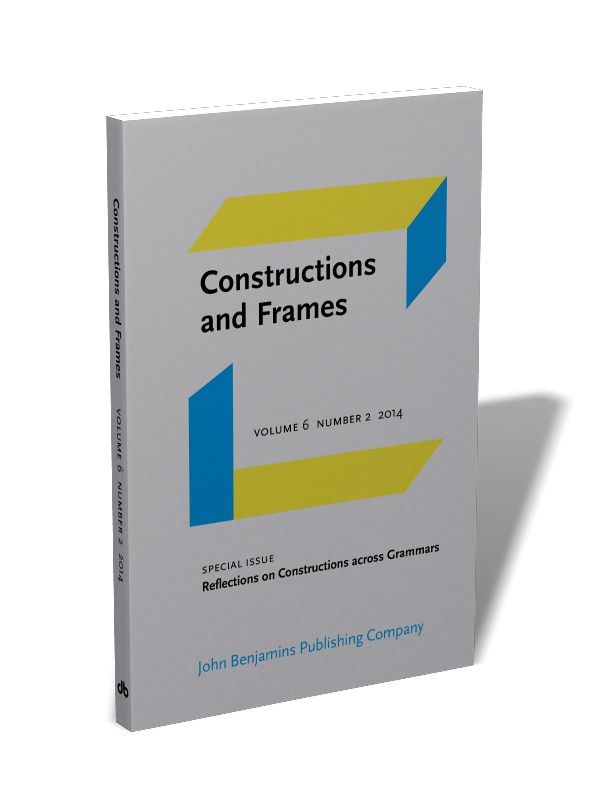 Neues zur Diasystematischen Konstruktionsgrammatik: In Constructions and frames 6 ist ein Artikel von mir erschienen, der sich damit befasst, welche Funktion phonologische Elemente im Sprachwissen Mehrsprachiger besitzen und wie diese Funktion im Rahmen der DCxG modelliert werden kann. Dabei geht es zwangsläufig zugleich auch um eine generelle Positionsbestimmung: Wie kann die Konstruktionsgrammatik phonologischen Phänomenen besser als bisher gerecht werden? Gerade die Analyse komplexerer morphophonologischer Zusammenhänge bietet dabei wertvolle Anhaltspunkte für die Rolle phonologischer Elemente im Sprachkontakt. Dabei lassen sich regelhafte Korrespondenzen zwischen lautlichen Strukturen mithilfe sogenannter phonological language markers fassen, die Konstruktionsstatus haben.
Neues zur Diasystematischen Konstruktionsgrammatik: In Constructions and frames 6 ist ein Artikel von mir erschienen, der sich damit befasst, welche Funktion phonologische Elemente im Sprachwissen Mehrsprachiger besitzen und wie diese Funktion im Rahmen der DCxG modelliert werden kann. Dabei geht es zwangsläufig zugleich auch um eine generelle Positionsbestimmung: Wie kann die Konstruktionsgrammatik phonologischen Phänomenen besser als bisher gerecht werden? Gerade die Analyse komplexerer morphophonologischer Zusammenhänge bietet dabei wertvolle Anhaltspunkte für die Rolle phonologischer Elemente im Sprachkontakt. Dabei lassen sich regelhafte Korrespondenzen zwischen lautlichen Strukturen mithilfe sogenannter phonological language markers fassen, die Konstruktionsstatus haben.
Höder, Steffen. 2014. „Phonological elements in Diasystematic Construction Grammar“. Constructions and frames 6, 202–231. ![]()
![]()
![]()
Usage-based CxG approaches share the central assumption that any grammar has to be acquired and organised through input-based abstraction and categorisation. Diasystematic Construction Grammar (DCxG) is based on the idea that these processes are not sensitive to language boundaries. Multilingual input thus results in multilingual grammars which are conceived of as constructicons containing language-specific as well as language-unspecific constructions. Within such systems, phonological structures play an important part in the identification of schematic constructions. However, the status of phonology in DCxG, as in CxG in general, yet remains unclear. This paper presents some arguments for including phonological elements systematically in the construction-based analysis of (multilingual) constructional systems.